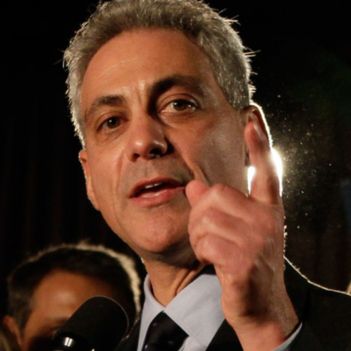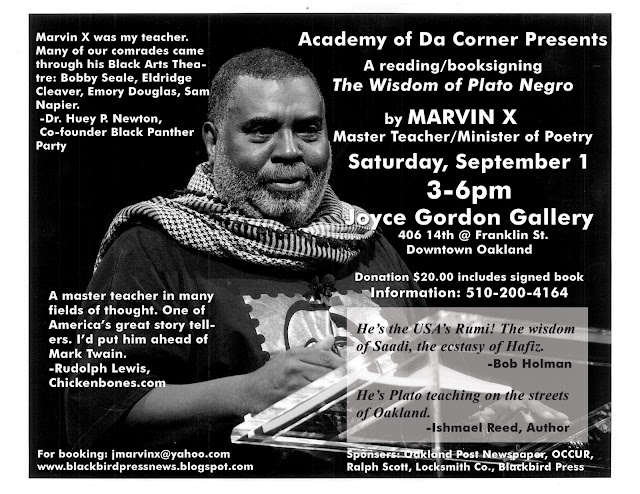Chicago killing as American as apple pie

By Norman (Otis) Richmond First Published in Caribbean Camera December 2, 2015
Chicago Mayor Rahm Emanuel maintains that the shooting of 17-year-old Laquan McDonald is a one-off situation. This is an outright lie.
Chicago police officer Jason Van Dyke shot McDonald 16 times. Police killing African men and women are as American as apple pie and the FBI. It is as Chicago as Michael Jordon and Scottie Pippen.
McDonald’s shooting was captured on video but the police kept it secret. It took 400 days for Van Dyke to be indicted. This is the first time in three decades a Chicago policeman has been indicted for an on-duty shooting of a Black person.
Police officers stood around, not helping the youth, seemingly securing the scene from an invisible threat. This is clear from viewing the video.
Historically, police have been seen as an occupying force in the African community in the U.S. Africans in America are colonized, just as in French-occupied Algeria, British Kenya or the Boers’ South Africa. Black people are an internal colony (a nation within a nation).
In fact, the U.S. is a prison of nations. Huey Newton and Bobby Seale created the Black Panther Party for Self Defence in Oakland because of police brutality. The role of police in Oakland was to protect the colonizer.
One of the most famous incidents of police misconduct was the 1969 murder of Fred Hampton. Ironically, the only place Hampton, 21, visited outside the U.S. was the University of Saskatchewan weeks before his murder.
According to the U.K.’s Guardian, “The arm of government that investigates police misconduct here in Chicago, the Independent Police Review Authority (IPRA), has found only one police shooting in the past five years to be ‘not justified’. This leaves all the others, nearly 400 shootings, to be considered ‘justified’. And it leaves the impression that police here sparkle with unicorn magic.”
Author Barbara Ransby puts it thusly: “The We Charge Genocide group here in Chicago says that, in the Jim Crow era, the rope was a symbol of lynching and today it is a police bullet.”
She talked about some of past events that shape the relationship between Chi Town’s African population and the police: The 2012 murder of Rekia Boyd, never forgotten by Black folks in Chicago. Less than 20 of its officers in Chicago have received crisis intervention training. In 1969 Toronto’s own Gary Freeman shot Chicago policeman Terrence Knox three times. Freeman said he was defending himself.
Chicago is where John Birch, former police supervisor, carried out systematic torture of young Black men, including electro-shocking genitals and putting plastic bags over the heads of people they were trying to coerce into confessions. All of this has now been documented. The Windy City is also a place that demonstrates brown skin representing white power. The mayor’s State’s Attorney Anita Alvarez is a Chicago-born Latino.
Africans born in the U.S. should be grateful to the international community for championing their plight.
Many like Dr. Gerald Horne who recently published, “Confronting Black Jacobins: The United States, the Haitian Revolution, and the Origins of the Dominican Republic” says that international support has helped people who are darker than blue stay alive in the Empire called the United States.
Africans inside the U.S. have a history of charging the United States with genocide. America has never been “the land of the free and the home of the brave” to its Black population. It has been “the land of the tree and the home of the slave,” David Walker wrote in his 1829 Appeal crying about crimes against Africans in America and the world.
Africans inside the Communists Party USA and other progressives published “We Charge Genocide: The Crime of Government Against the Negro People”’ in 1951.
Others like W.E.B. Du Bois, Paul Robeson, William L. Paterson, Claudia Jones and Charlotta Bass supported the movement. Paterson’s father was born in St. Vincent, Jones hailed from Trinidad and Tobago.
The International People’s Democratic Uhuru Movement (InPDUM) has launched a petition to be presented to the UN charging the American government with genocide against African people in the U.S.
T
o paraphrase Frederick Douglas, without struggle there cannot be progress.
NB: this text is copyrighted, and only limited excerpting with full attribution is permitted. For licensing and reproduction permissions, please contact Norman Otis Richmond at normanotisrichmond@gmail.com.

















